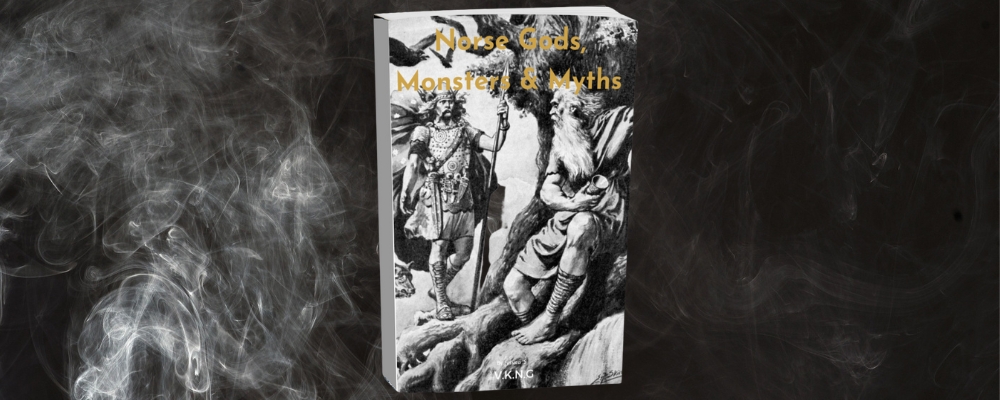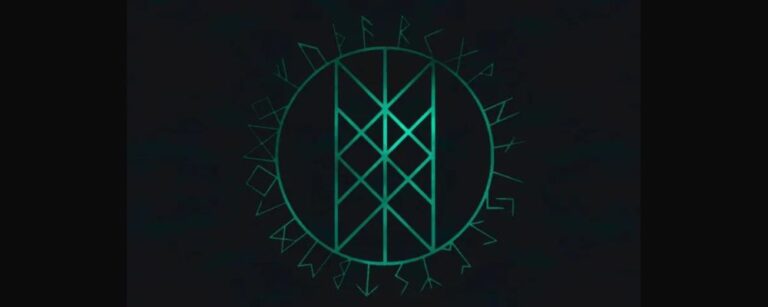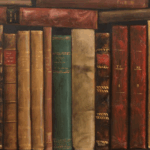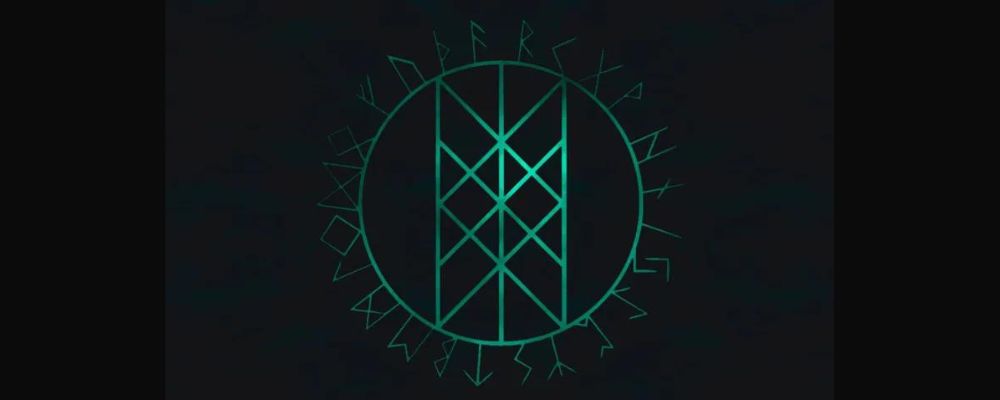
If you are a fan of Old Norse symbols, like me, then you have probably come across the Web of Wyrd described as a Viking symbol linked with ideas of fate and destiny. However, if you, also like me, search for examples of the Web of Wyrd symbol being used in the Viking Age, you will be sorely disappointed.
The Web of Wyrd is a modern symbol that seems to date from the 1990s, but the ideas of fate and destiny that it reflects were deeply ingrained in Viking society. Let’s look at the symbol, the concepts it is linked to, and its true origins to better understand the Web of Wyrd.
What is the Web of Wyrd
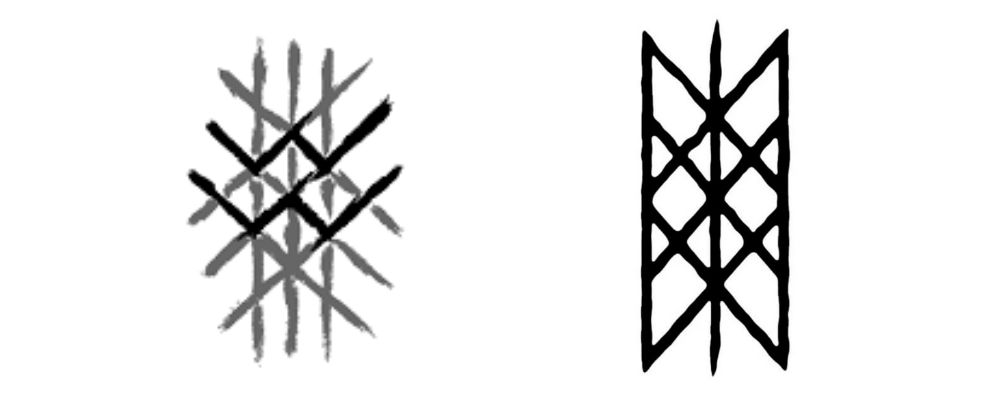
The name Web of Wyrd is given to a symbol of nine interlocking staves that are laid in a pattern to form a web. There are two versions of the symbol, one that looks like it is created from twigs and has arms that look like they extend out into the universe. The other is a simpler, self-contained, geometric symbol.
It seems significant that the symbol uses nine twigs or strokes since the number nine was sacred in Norse mythology. The most obvious example of this is the fact that the Norse universe contained nine worlds.
The symbol seems to be inspired by the Old Norse runes, which use similar vertical and diagonal stroke lines to form each of its runes. Those who study the symbol suggest that all the Younger Futhark runes can be traced within the symbol.
They will also tell you that the symbol represents an individual’s fate or destiny, their Wyrd.
Wyrd or Urdr
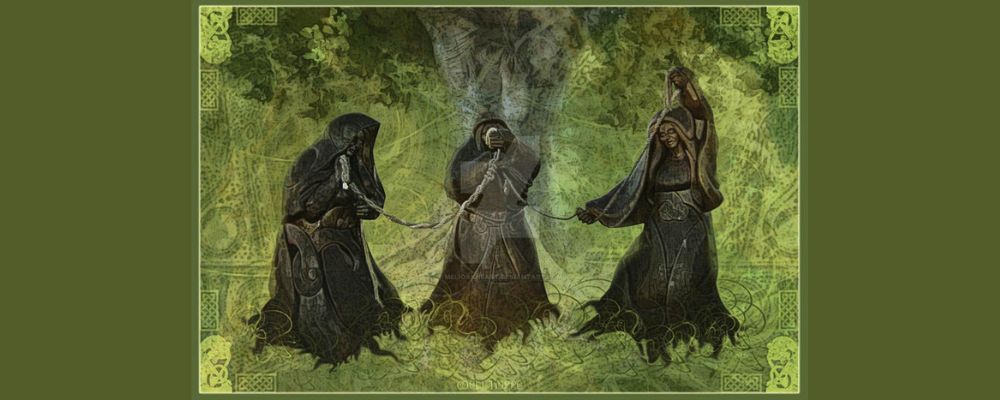
Just to be pedantic, there is no concept of Wyrd in the Viking world. Wyrd is an English word thought to be derived from the Old Norse term Urdr.
Broadly speaking, Urdr means destiny or fate. It should perhaps be translated as “to come to pass, to become, or to be due”.
The term Urdr appears in Norse mythology as the name of one of the three Norns, Norse fates, that create destiny. They both weave the threads of destiny and cut marks, which presumably means that they carve runes. Therefore, both weaving and the runes seem to be associated with ideas of fate and destiny, and both are reflected within the Web of Wyrd symbol.
While many supernatural women are described as Norns in Norse mythology, there seem to have been three principal Norns. This is also consistent with Old Germanic archaeological finds with many small altars dedicated to three female figures. These three Norns are called Urdr (to become), Verdandi (that which is happening), and Skuld (guilt or debt).
They performed their work at a well called Urdrbrunnr, or the Well of Fate. It is unclear whether the well was named for the Norns, or the Norns performed their work there because the well has some kind of special significance. The same confusion exists for Mimisbrunnr, the Well of Wisdom, where the disembodied head of the wise god Mimir lives. It is unclear whether the well was named for him, or he was placed there because of the properties of the well.
The well does seem to be special, as the Norns are also described as taking water from the well and using it to water the roots of Yggdrasil so that the tree does not shrivel and die. As the backbone of the Norse cosmos, it seems possible that fate could be linked with the world tree.
The Concept of Urdr
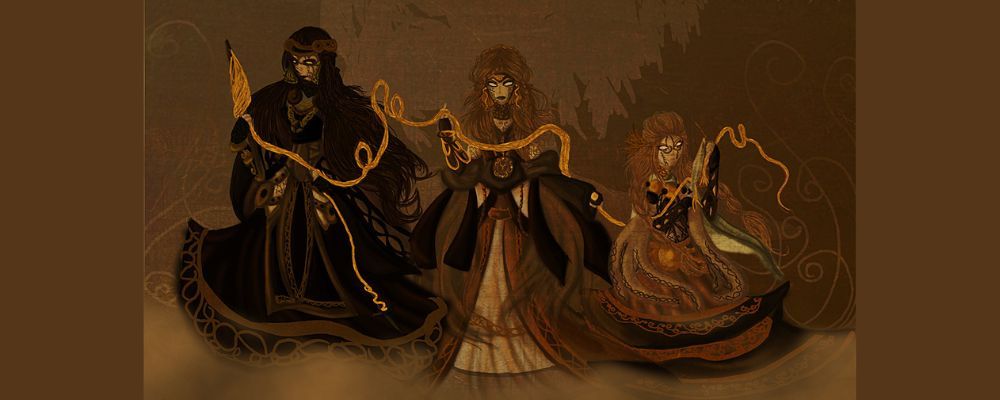
The concept of Urdr in Old Norse culture seems not simply to have been fate, but predestined fate. While Verdandi seems to reflect the decisions that a person makes today, and the Skuld the future debt of those decisions, Urdr seems to represent the things in the past that have led a person to where they are now.
This was a very important idea in Viking society as they believed that a person was born with a predetermined fate. This was given to the individual at birth. This is reflected in the Helgakvida Hundingsbana I, which describes the Norns attending the infant Helgi to spin his fate.
And fate was not random or new to the child. It was also linked to their hamingja. This is one of the four elements of the Norse soul, considered to be a person’s luck of fortune. While individual, it was also in some ways inherited from a person’s ancestors.
The fate that the Norns spun for a person was not actually called urdr, but rather orlog, which kind of means “greater law” and seems to refer to the greater law that a person must live by, their fate, which cannot be broken.
The Vikings believed that they were powerless to change their fate. One Old Norse poem describes trying to avoid fate as trying to row a boat against a fierce wind.
One of the morals of the Ragnarök prophecy seems also to be that fate is inevitable, even for the gods. The fact that they will die at Ragnarök is set in stone, and there is nothing that they can do to change that.
But rather than promoting fatalism or nihilism, the lesson does not seem to be to just accept your fate, but rather to face your fate bravely and do it justice, fighting until the very end. Thor is not afraid to face Jormungandr, even though he knows that it is his doom. He does not hold back or try to protect himself.
First Appearance of the Web of Wyrd Symbol
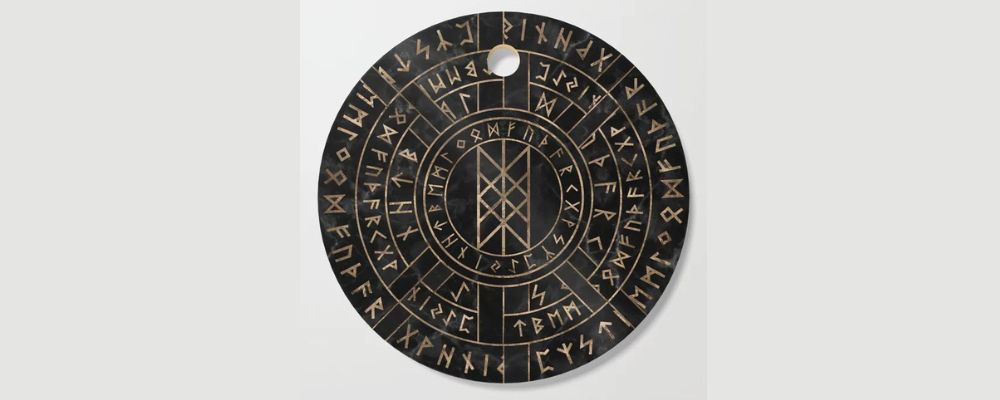
From what we know of Urdr in the Viking world, the Web of Wyrd does feel like a perfect symbol for it. Though perhaps it should be called the Hamingja Net or the Orlog Weave.
But this perfect alignment should perhaps be taken as a sign that the symbol is not ancient with an unknown history, like the Valknut or the Sun Wheel. In addition, there are no examples of the Web of Wyrd symbol surviving from the Viking world. The symbol seems to come from modern occultism.
The earliest known depiction of the Web of Wyrd symbol, also sometimes known as Skuld’s Net, dates to 1993 in a text written by the German occultist Jan Fries called Helrunar: A Manual of Rune Magick. He doesn’t name the symbol or describe its purpose, but he may well have encountered the symbol in his engagement with 19th-century ritual magic groups. He was known to be greatly influenced by Aleister Crowley and the Ordo Templi Orientis.
The symbol is named a “web” by author Graham Butcher in 1995 in his publication Stav: The Fighting System of Northern Europe. He specifically says that the symbol represents the unseen web that holds everything in existence together. He also links the symbol to the Norse Runes, suggesting that the image contains all the runes.
The name Web of Wyrd was applied to the symbol later, though it is unclear when and by whom. The oldest surviving reference to the Web of Weird comes from the fictional work of the English author Brian Bates, in his 1983 novel The Web of Wyrd: Tales of an Anglo-Saxon Sorcerer. However, he does not mention a specific symbol in the work.
What is Your Wyrd?
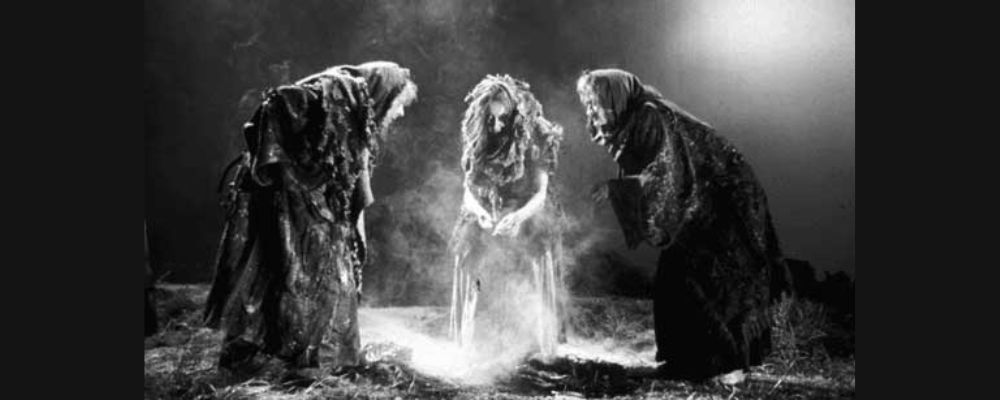
While the concept of Urdr, called Wyrd, appears in the Anglo-Saxon world, the Web of Wyrd symbol continues to be absent. Among the Anglo-Saxons, Wyrd also referred to fate. In Anglo-Saxon texts, such as Beowulf, Wyrd is often used to refer to things that come to pass that must be accepted as inevitable.
While Viking philosophy and beliefs are very popular today, the idea of a predestined fate is probably one of the hardest to accept. Most people choose to believe that we write our own destinies.
But it is worth remembering that the Vikings did not let their belief in Urdr stop them from doing great things. Instead, they might have used the idea to reassure themselves that they deserve what they have since it is their destiny, and to let go of old problems and move forward, because those setbacks were also part of their journey.
